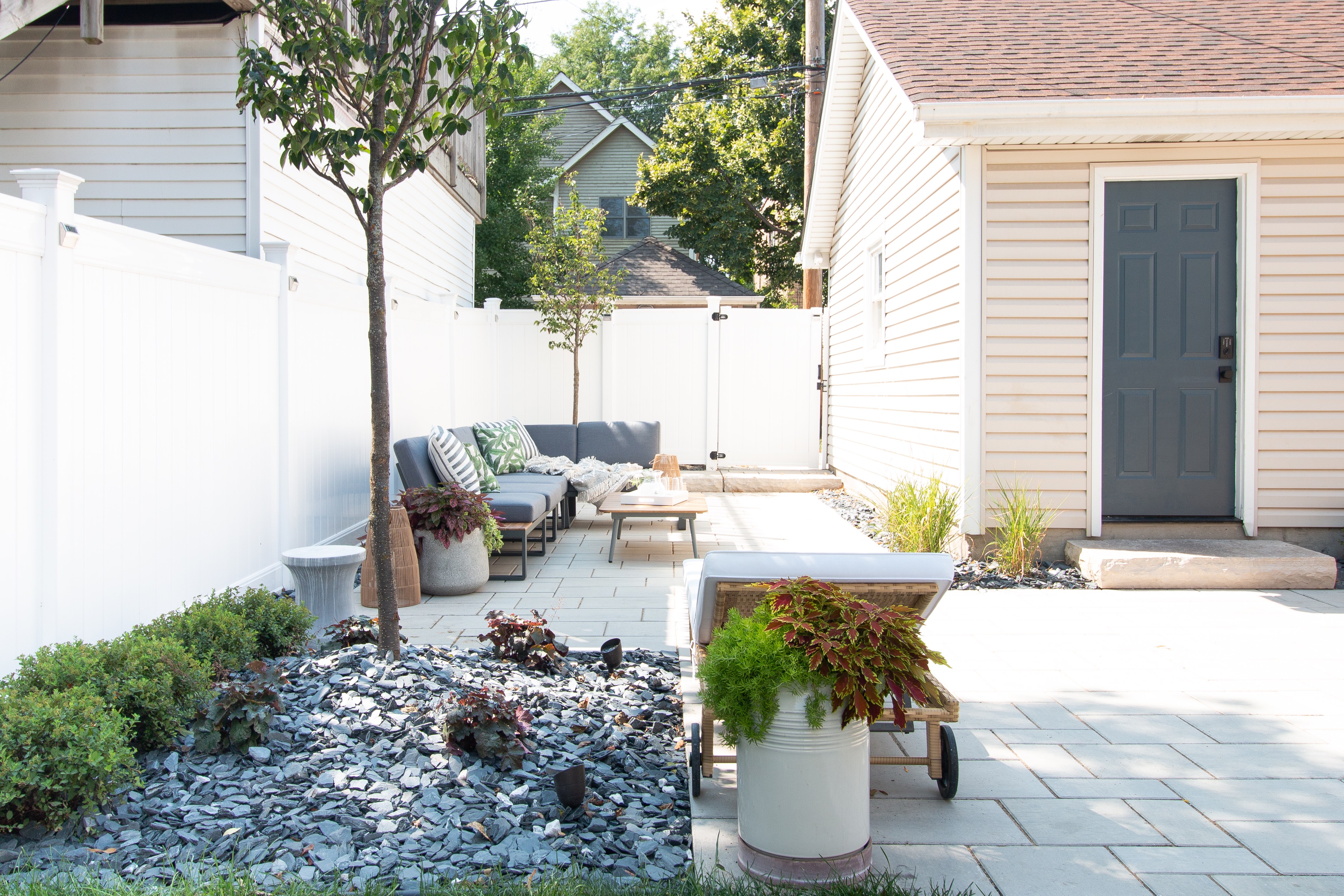
The area at the side of your house, no matter what size you are dealing with, does tend to be seen as a bit of a practical space. A storage space even. A spot to house the hose, the trash cans, the outdoor tap, the kid's toys – it's rarely seen as a place that can be turned into a beautiful extension of your garden, with planting and landscaping. But as all of these beautiful side yard ideas prove, it is possible to make this space more than something purely functional.
So stop thinking of your side yard as an awkward narrow space, and be inspired by these ideas to transform it into a seamless section of your yard. It could be the perfect spot to add an outdoor living room, or a tropical, jungle-like garden with towering plans and shade-loving ferns, or even if you just turn it into a chic path with some architecture planting that makes for the perfect transition into your backyard.
Side yard ideas
Design experts explain how to make the most of that unloved strip that runs along the edge your home.
1. Connect a side yard to the backyard
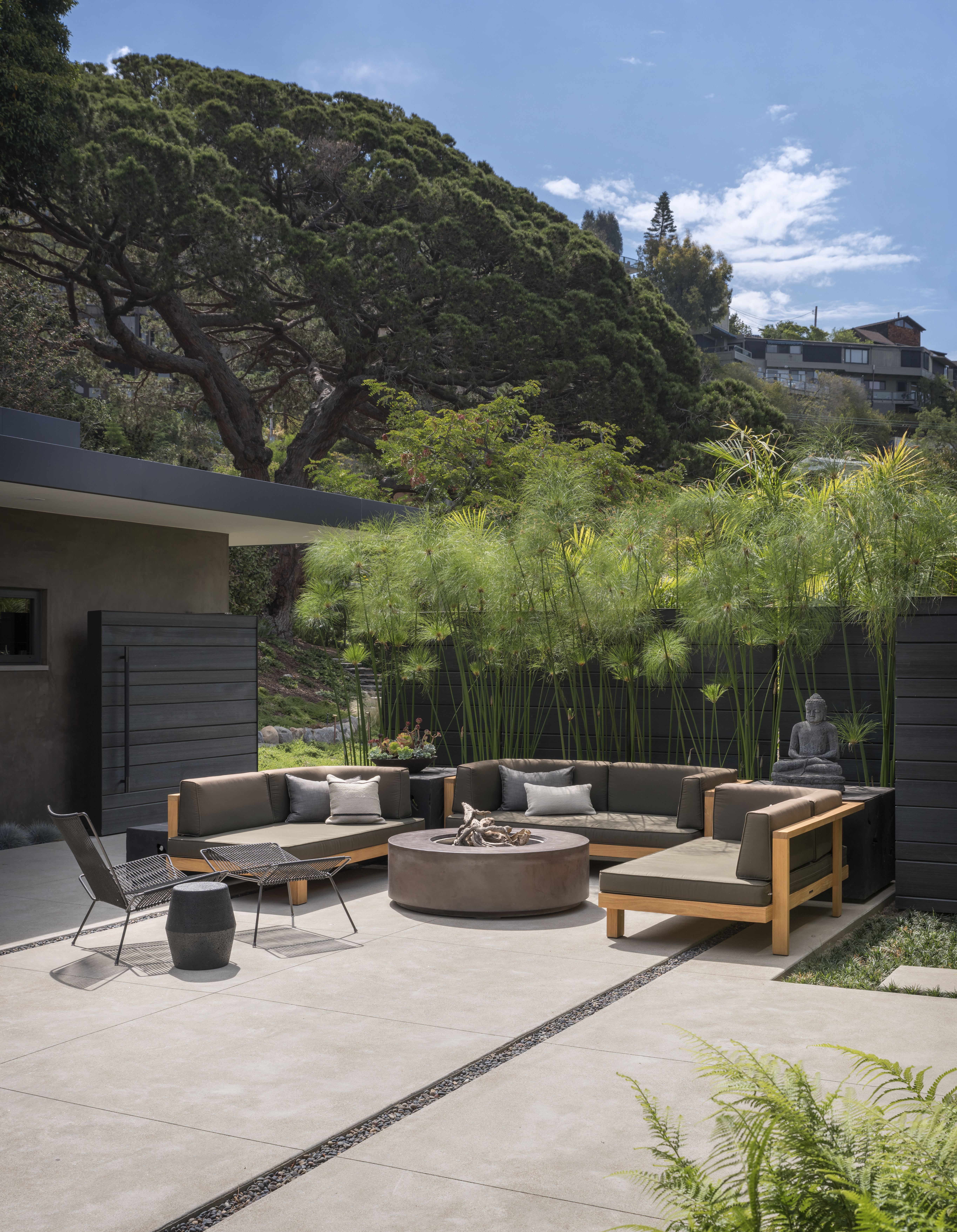
So what is a side yard? A usually neglected strip that runs between your back and front yards. However, you can make so much more of a side yard if you don't treat it like this totally separate area of your outdoor space. Create connections between the side and back yard and give the space a purpose and a reason for yourself and guests to want to use the space as seen with this side yard designed by Lucas. 'Side yards can become the center of a home. This seating area is a great spot to cozy up to a fire in an outside room, taking full advantage of the Southern California lifestyle,' says creative director David Lucas.
'It can be tough to create a welcoming environment in a narrow side yard, but wider pockets in side yards are fair game for all manner of gathering spaces or outdoor seating areas, particularly when they’re positioned at the rear of the side yard, just around the corner from the main backyard. In this situation, the side yard design benefits when you can establish sight lines around the corner to foster a sense of connection between a side yard space and other parts of the backyard design,' suggests Kevin Lenhart.
'Always try to establish views into your side yard from more active parts of the yard, or orient it to be clearly visible from interior spaces. And if your side yard is a priority, make sure you work in ways to activate your side yard design. The nicest design in the world won’t get any use if there isn’t some mechanism to bring people to it.'
2. Create a private relaxation area
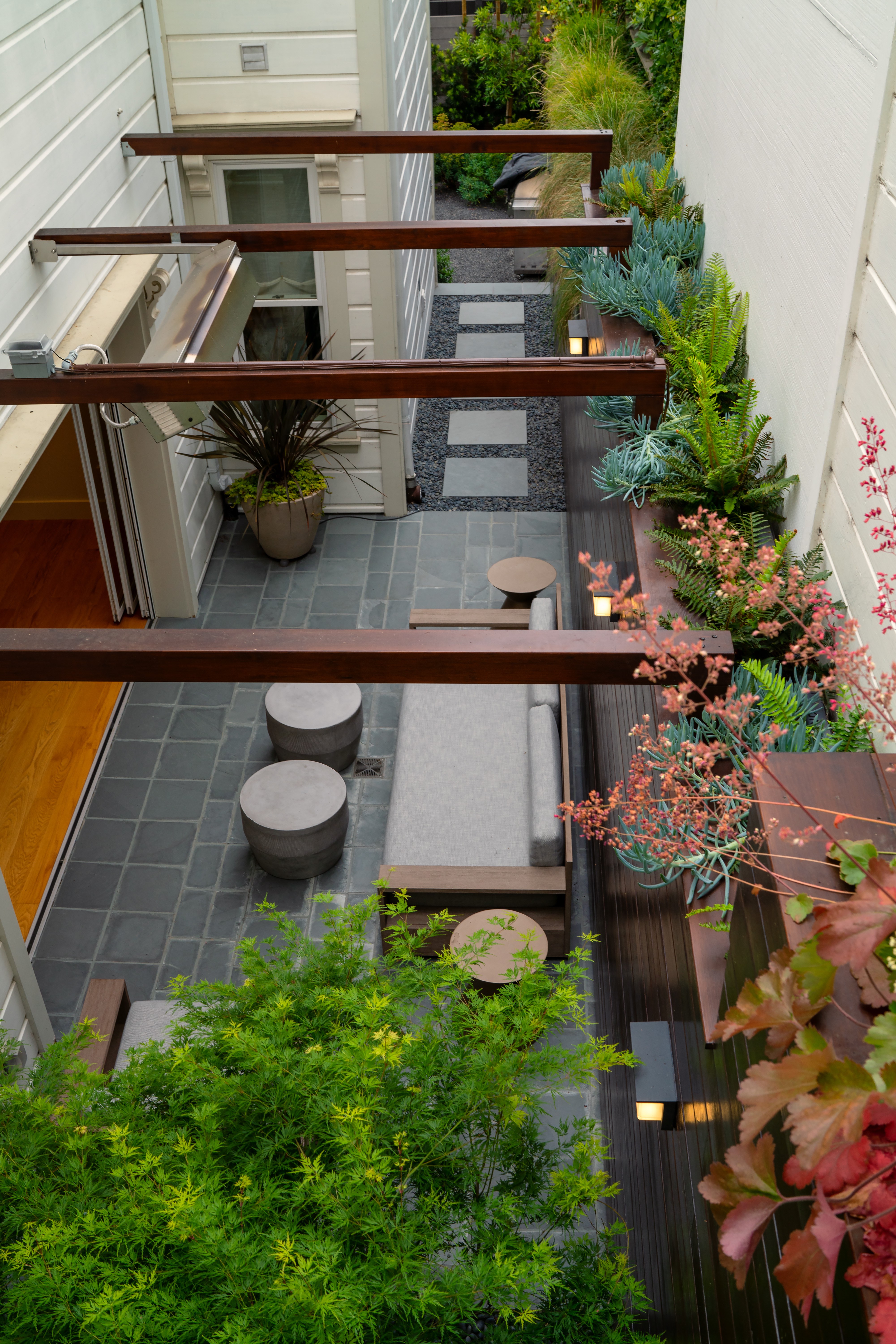
As with any indoor room, sometimes the best approach is to lean into the awkwardness of the space. Some side yards won't have the option of creating this seamless connection with the back yard, so use that to your advantage and treat it as its own space, its own room within your garden that serves a totally different purpose.
'Side yards feel more remote than front and back yards. Rather than fight this, it can be smart to embrace this quality by designing spaces intended for privacy or moments of stillness. This could be anything, from spas and outdoor showers to private courtyards intended for reading, meditation, or coffee with a loved one.' suggests Kevin. ' And play to the strengths of your side yard. In hot climates, the shaded condition of side yards can make them an excellent spot for a cool refuge.'
This side yard, designed by landscape designers Seed Studio and architects Jayson Architecture, creates a serene seating space and while there's that link with the rest of the yard, it's not visible which gives it an intimate, room-like feeling. 'Side yards are great places for elements that may for various reasons not blend well with the rest of the design. If the side yard is really narrow it is best used as a transition between spaces, and in this case, I like to obscure the view a bit so the arrival is a bit of a surprise,' explains Steve Ritchey founder of Seed Studio.
'Our clients were seeking a classic yet modern garden that invited them and their guests to explore and more fully utilize their outdoor space. We began by selectively removing stone from a narrow existing side patio. This created an opening for a small tree and a separated basalt stepping stone path that visually leads to the rear yard. A Seiryu Maple adds the perfect shade of green at eye level, and will in time create a light canopy above the patio to soften the multistory vertical walls,' he adds.
3. Take a minimalist approach
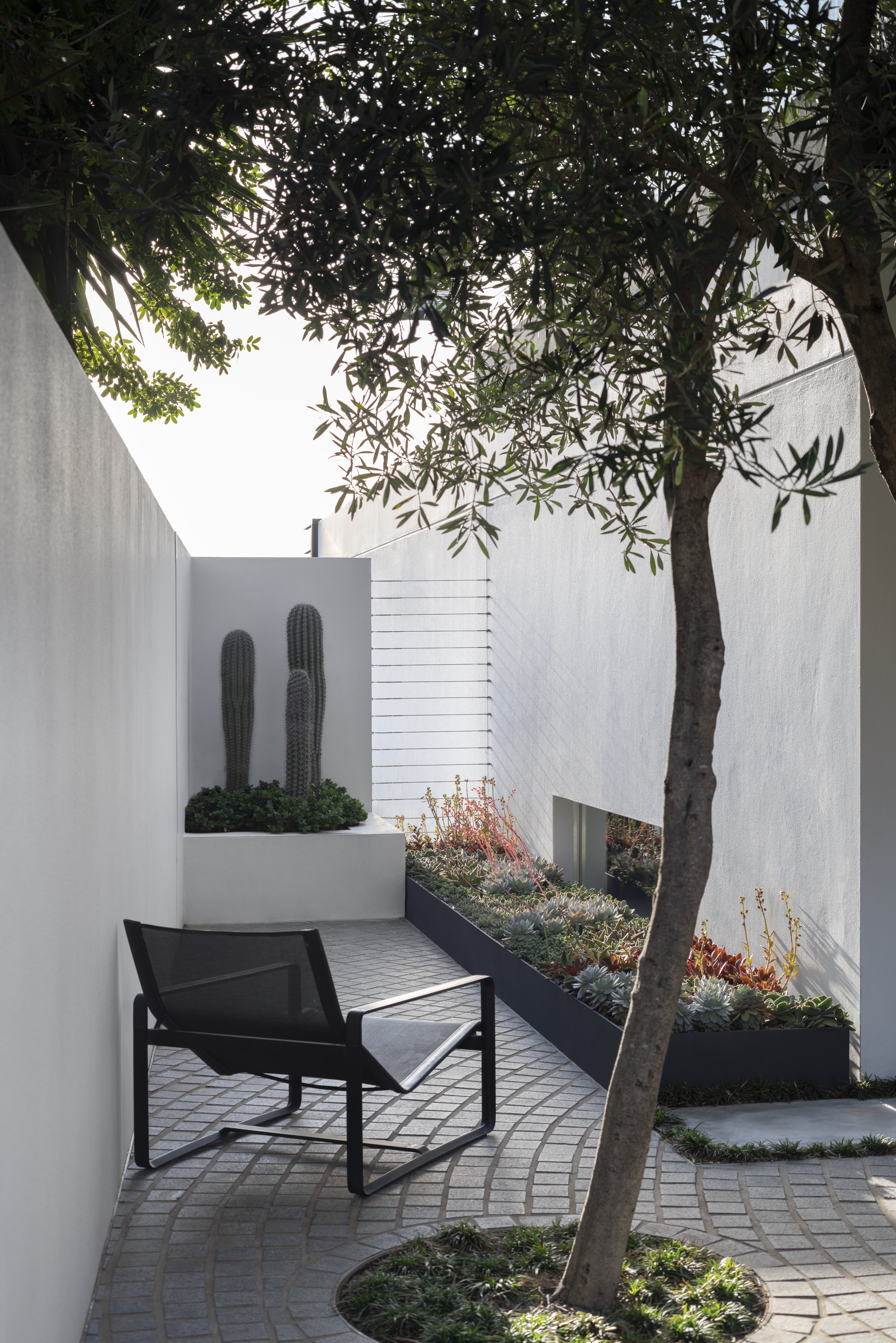
Again, like in a small or slightly quirky room our rule would be not to overcrowd the space. Choose outdoor furniture that's simple and sleek, and minimize the amount of pieces you bring into the space. 'For furniture, it’s important to stick to the essentials and not overdo it in these small spaces. You want to leave room for circulation around the patio, so consider lower profile furniture, furniture with a slender silhouette, etc,' suggests Kevin. 'For example, you might opt for a slender rectangular fire pit next to a low-slung coach as opposed to a round fire pit surrounded by Adirondack chairs that take up a lot more area and are cumbersome to get around.'
And the same goes for planting. Architectural plants like palms, cacti, and succulents are ideal for side yards as they have striking silhouettes but won't overwhelm the space. We love the sleek and simple approach to this side yard designed by Secret Gardens. Design manager Henry Chapple-Cox describes the project as taking 'a minimalist approach, architectural plantings complimenting the strong geometric forms of the architecture – a place for reflection.'
4. Pick plants that are going to thrive in a side yard
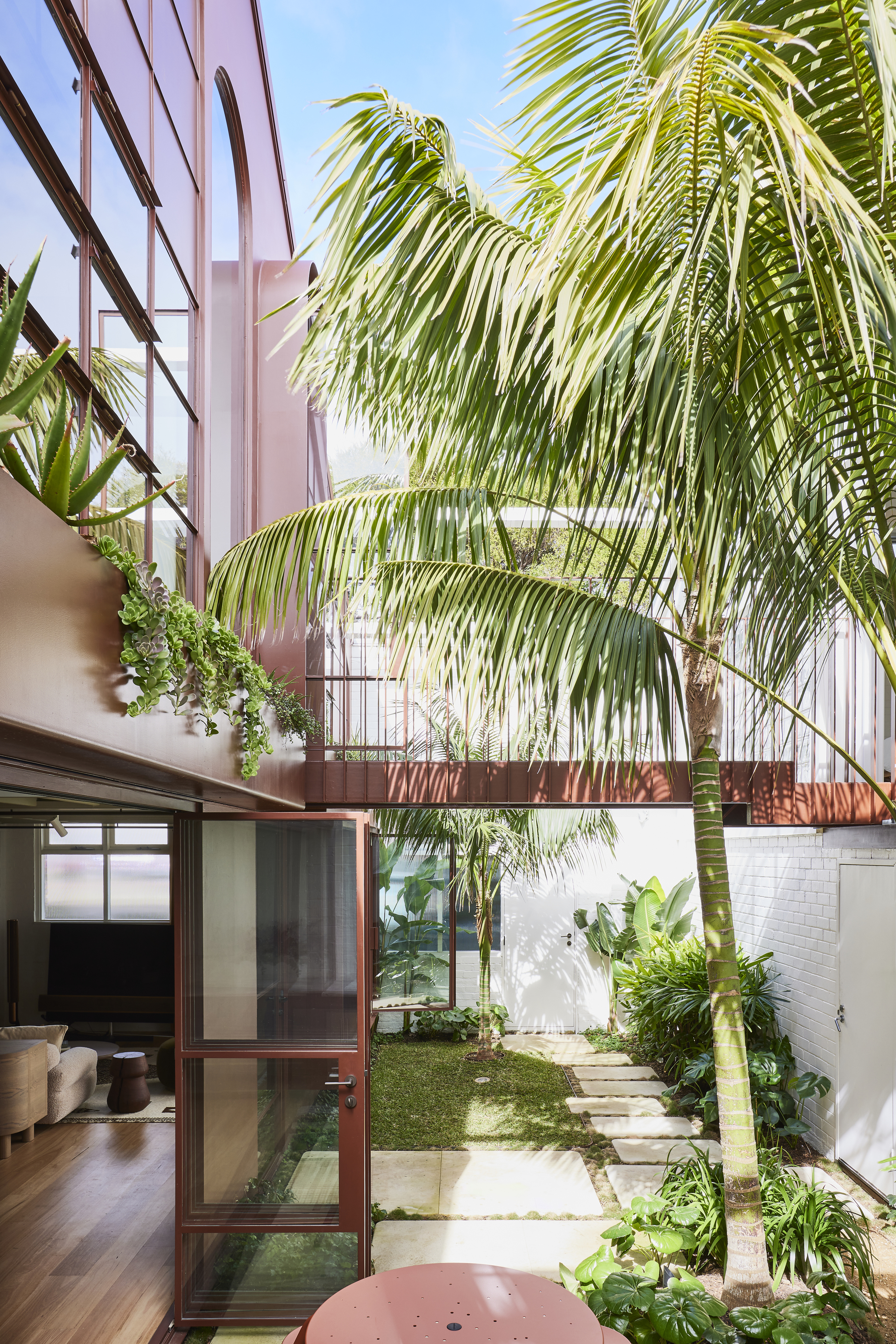
'Beyond size, side yards can have much different and often shadier light conditions than other parts of the yard. Proximity to the house and solid fences often make these areas shadier, so select plantings accordingly. And as always with tighter spaces, consider max mature growth of any plantings, as you don't want to overcrowd the space,' suggests Kevin.
So what plants are going to thrive in these potentially very narrow shady garden? Gardener Dan Cooper says, 'It's critical when choosing plants for a side garden that they're compact and shade tolerant. It's helpful if they're drought tolerant too, as buildings often create a rain shadow that reduces the moisture reaching the ground. The best plants also offer year-round interest which you'll appreciate if you're looking out of the window at them regularly.'
'Camellias love the shelter of a wall and grow slowly to produce handsome shrubs with flowers in late winter and early spring. They can also be grown in pots. Star jasmine, Trachelospermum jasminoides, is one of the best plants to cover a fence with attractive evergreen foliage and may flower in early summer if not too shaded. Many clematis, including 'Nelly Moser', 'Madame Julia Correvon' and 'Polish Spirit' are shade-tolerant and can be trained over fences or allowed to scramble through other plants to give sparks of color.'
'Ferns are perfect candidates, making elegant ground cover. My favorites are Polystichum setiferum 'Herrenhausen' and Cyrtomium falcatum - their contrasting foliage makes them good partners. If you have a wider side area, or want a more architectural plant, Fatsia japonica makes a wonderful feature plant as does Schefflera taiwaniana.'
5. Avoid creating a corridor
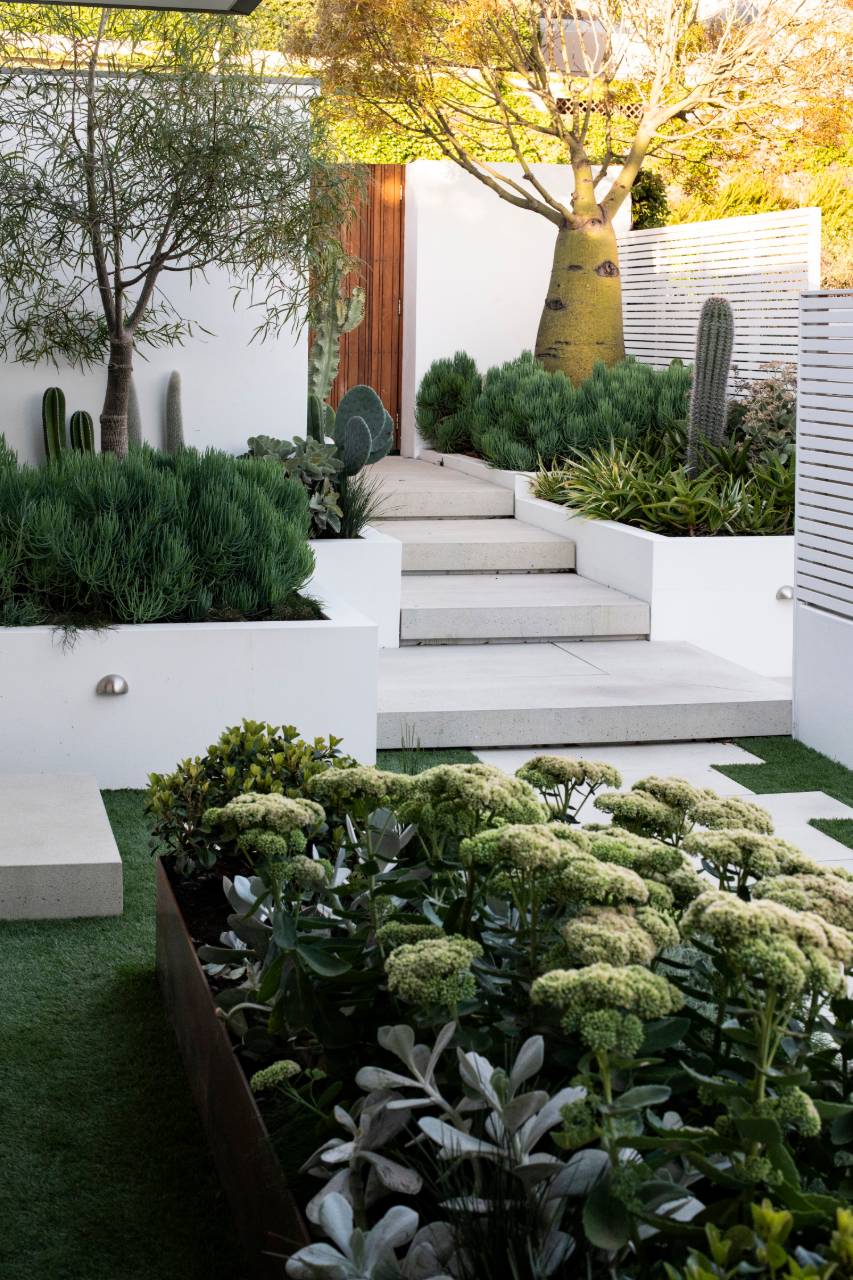
By their very nature, side yards need to be used for access, so you will most likely have to work around the fact there will be some kind of walk-through. As a result, side yards can feel a bit corridor-like as everything needs to sit close to the edges of the space. However, this yard designed by Stark Design takes the stretch from front to back and makes it feel like its own garden as well as a transitional space.
The challenge of this space was that there was little to no soil, so pots or planters were essential. But rather than just running them around the edge of the space, enhancing the tunnelling effect, the planters blend seamlessly into the walls, like an extension of the house, and the variation in size and levels makes it all feel very organic. Plus, planters have been added to the center of the space too. And there's variation in the heights and shapes of the planting too, which again helps prevent that formal, pathway feel and adds a softness to the edges of the space.
6. Turn a side yard into an outdoor dining space

'So many people forget about their side yards and depending on your side yard size and ratio, you can utilize the space and add to your outdoor entertaining space,' says designers Victoria Holly. 'Some of my favorite purposes for side yards have been an intimate firepit area, somewhere to hide the kids' play equipment (so your main backyard can remain pretty!), additional storage for things like bikes or gardening tools, or an additional outdoor dining area. Or, even an area for a built-in barbecue.'
'Many side yards are off of a kitchen door and this is perfect for barbecuing, or having a narrow and romantic dining area outside. You can make it intimate with a narrow, rectangular dining table and overhead string lights and utilize the length of side yards! These spaces shouldn't be neglected because it's so great to have that additional outdoor square footage!'
This side yard by landscape designer Kate Anne creates the perfect sheltered and shady spot away from the main backyard. The gates give the space a room-like feeling and yet the continuity of the flooring creates that connection with the back yard.
7. Or an outdoor living room
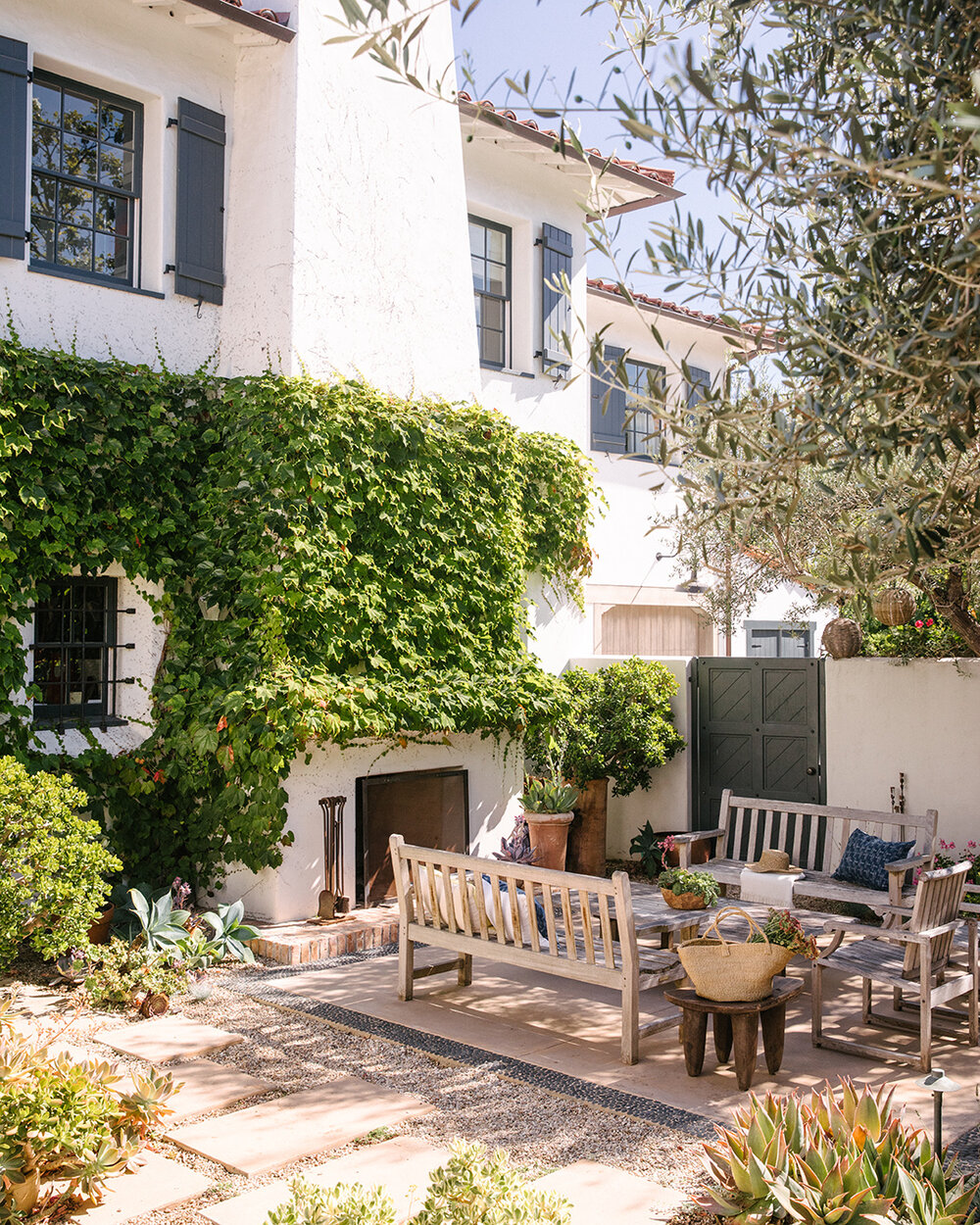
Outdoor living rooms have been a huge garden trend in recent years. We no longer just want a garden table to host the occasional alfresco dinner party, but whole rooms, reconfigured outdoors complete with throw pillows, rugs, coffee tables, and decor. And a side yard can lend itself perfectly to creating an intimate outdoor living space – turning a transitional space into a really usable part of your garden.
'If there’s a strong indoor/outdoor connection in a side yard and enough room, I generally try to create an outdoor living space that essentially adds to the livable area of the home,' suggests Patricia Benner, founder of Benner Landscape Design. 'We created a seating area at the fireplace and a dining area on a sight line off the kitchen. The entry path runs through the space and subtly separates these two discrete outdoor living areas.'
One practical point when creating an outdoor living room – do consider if you frequently use your side yard as access to your back yard. 'Side yards tend to be areas used for accessing the back from the front so keeping the space accessible if needed will have to be taken into account. For example, you should think about any situations where you might need access to the backyard in the future – say if you need to bring in renovation material, or machinery. Choose furniture that can be relatively easily moved if needed,' advises Kevin.
8. Turn a pathway into far more than a transition
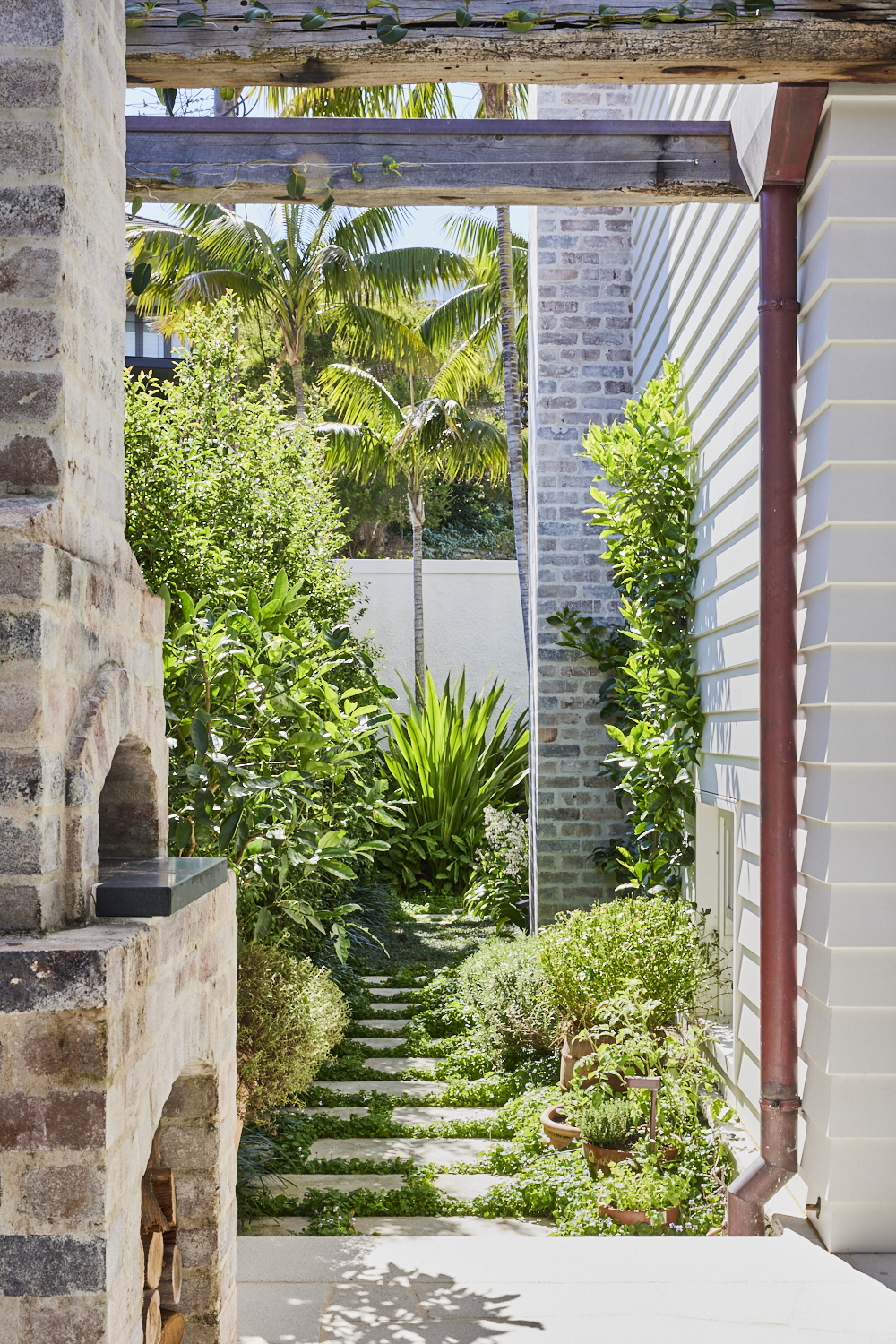
A garden path is the most common, and usually most practical use for a side yard, especially if you are tight on space. However, a pathway can be beautiful too. Case in point this side yard designed by Wyer & Co. The key to making a pathway feel like more of a garden in its own right, rather than just a transitional space, is to soften the walkway. Use planting to blur the edges and, as seen here and ensure the pathway design you choose feels very natural and organic, part of the greenery rather than an obvious solid corridor running through it.
'The side yard or passage can serve a valuable purpose in landscape design, acting as a transitional zone between indoor and outdoor areas while offering an opportunity to showcase plantings and create privacy. As these areas are often narrow and limited in space, approach planting creatively and consider climbers and bamboo for screening instead of traditional hedging. Organic shaped steppers can provide structure underfoot, allowing the garden to reveal itself in an interesting way,' explains Anthony Wyer, founder and creative director of Wyer & Co.
'For this project an elegant water feature at the entrance fashions a sense of arrival. From here, transitions and pathways guide and delight creating a seamless flow between zones. Overhead, a canopy of palms (Howea forsteriana (Kentia Palm)) cocoon the home while organic steppers provide structure underfoot, allowing the garden to reveal itself in an interesting way. Here, the use of ground covers introduce softness and a sense of depth. But they also help to visually connect different areas of the landscape, creating a sense of continuity across levels.'
10. Squeeze in a swimming pool
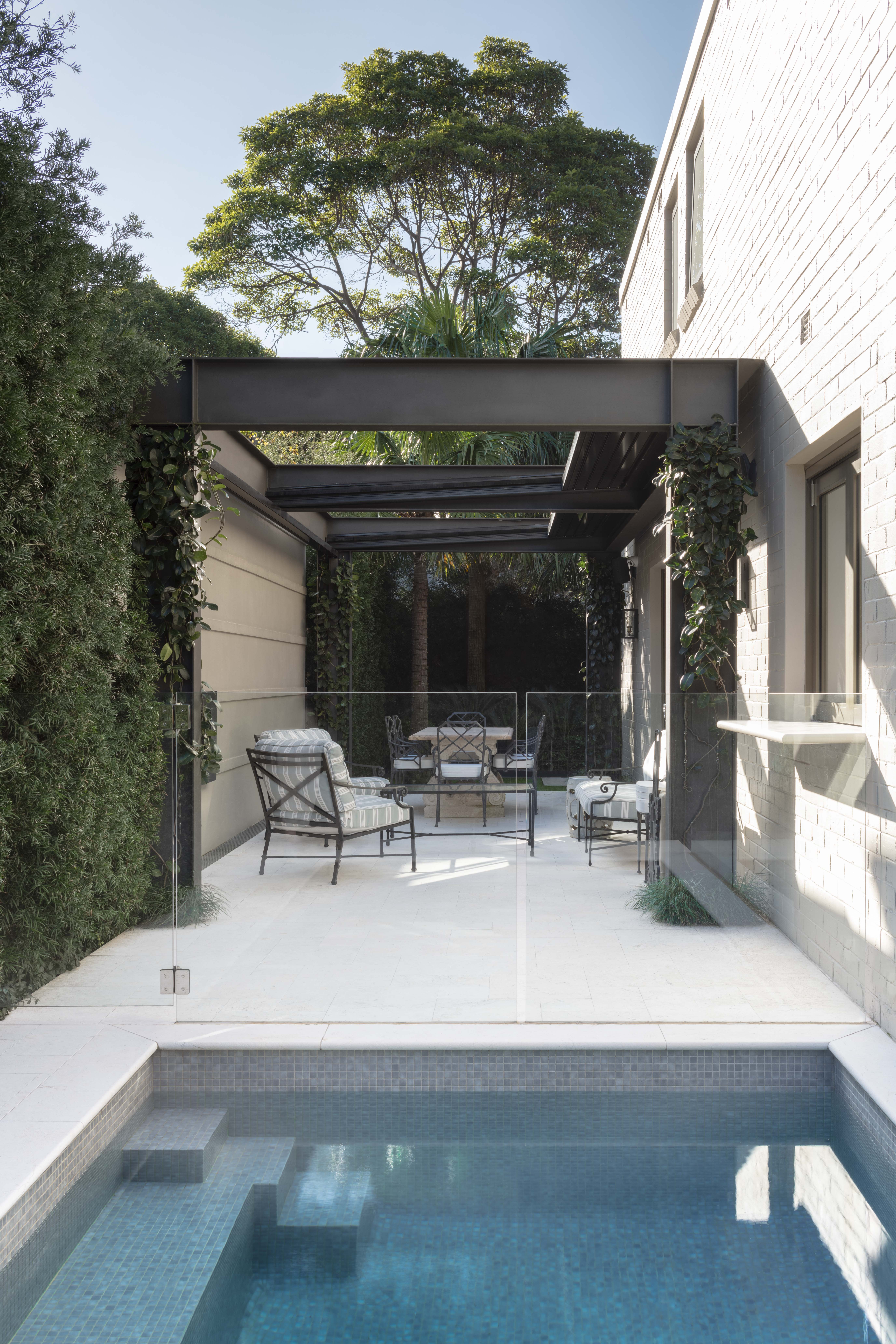
A side yard swimming pool seems to be a bit of a trend right now, and we have seen some gorgeous designs that turn a awkward space into an oasis. And there's something so elegant about a narrow pool, very luxury hotel vibes. Plus adding a small pool is the most affordable and easy to maintain approach. You could run it alongside the house and into the main back yard too to create a real seamless connect between the two spaces. Then the pool deck could be added once the space opens out.
This tight space squeezes in a lot, a swimming pool and a verander which joins the front and back yard. 'This garden presented as a blank canvas,' explains Anthony Wyer. 'And by working collaboratively with the architect and interior designer, both space and experience are transformed. Architect Daniel Boddam was tasked with the hardscape and structural works for this project, replacing tired surfaces and introducing a pool and pergola with retractable roof.'
'With these surfaces renewed and the existing vegetation removed, our design team set out to soften these architectural elements while creating a clear and cohesive connection between key zones. Dressed in layers of green, the result is a functional, private courtyard that ensures the home’s interiors, designed by Cameron Kimber, enjoy a verdant outlook, year round.'
What is a side yard?
'A side yard is an area of land located on the side of a home, typically between the main building and the property boundary or adjacent structures,' explains Kevin Lenhart, design director at Yardzen. 'Side yards are typically transitional or utilitarian spaces, used for things like storage and utility infrastructure, or simply as a passage between front and back yards without entering the home. If they are not used for essential storage, and they don’t have an entry point from the front yard, they often go underutilized. These skinny pass-through zones actually can have a lot of potential.'
Anthony Wyer, founder and creative director of Sydney-based landscape design practice Wyer & Co agrees that 'The side yard or passage can serve a valuable purpose in landscape design, acting as a transitional zone between indoor and outdoor areas while offering an opportunity to showcase plantings and create privacy. As these areas are often narrow and limited in space, approach planting creatively and consider climbers and bamboo for screening instead of traditional hedging. Organic shaped steppers can provide structure underfoot, allowing the garden to reveal itself in an interesting way.'







